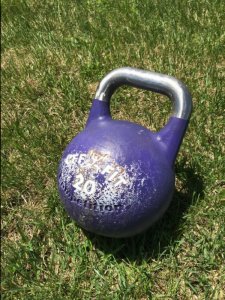Seems like a good time of year to think about starting your ski conditioning (if you haven’t already). A lot of good info in the posts above to revisit.
I’m closer to 60 than 50 now and I feel as strong, maybe stronger than I did at 40 particularly on skis. The main reason, for me anyway, is that at 40 I was still grinding it out in the work force, meaning I skied maybe two dozen days a year back then. In semi retirement now I work full time skiing/teaching 6-8 hours a day for around 100 days a season at a ski area where the parking lot is over 10K in elevation. While that alone will get you into great shape the other side to it is that I absolutely must be in good shape at the beginning of the season, or I will pay dearly as it’s a sprint right from the beginning, skiiing at least 5 days straight from day one and often working through what would be my weekends. (If you love what you do, it’s not work

. I also coach a lot of young advanced skiers with a lot of energy, so I have to keep up.
I’m a believer in resistance training, and going heavy to achieve strength gains. In almost every athletic endeavor or even just everyday physical activity a stronger body makes you more efficient and keeps you from tiring. It can also strengthen your bones while protecting them from that out of control skier/rider that seems to find me at least once a year, plus it’s hurts more (for them) when they hit you

.
Over the years I’ve evolved my training, it’s something I do year round. I’m on skis Nov-April. Lift heavy (4 sets of 6-10 reps alternating upper and lower body 4 days a week plus a cardio session, then I run 2 days, rest one) May/June. Then take my summer vacation and travel in July so no training then, back to lifting heavy Aug/Sept.
End of Sept I change to endurance training where I do less weight but more reps (4X12) but I add in a skier specific eccentric training routine. After my lifting I do Leg Blasters (look them up) starting with a mix of half-blaster and full blaster and working my way up to 6 sets of full Blasters, which if done right will absolutely drain you! I have never felt anything as close to skiing, 6 sets (30sec rest between) and you will feel as if you have bashed moguls all day long, seriously you will feel the burn in your quads and you will really feel it the next day, especially at first.
There are variations on the leg blaster and things you can add to make it harder, but if you do only one thing do the Blasters, working up to 6 sets 3 times weekly for 6 weeks before skiing. When you get on skis that first day out it will feel like you’ve been skiing all season, your legs won’t even feel sore.
Just a disclaimer, this is my routine. I’ve trained for years for skiing and other things, so I’m not starting from scratch. If you are, see a trainer or get with a buddy who lives in the gym (we all know at least one) Lifting, like skiing is about form. Going too heavy, especially with bad form and a still weak core is a recipe for injury. Start easy, consistency is the key.

